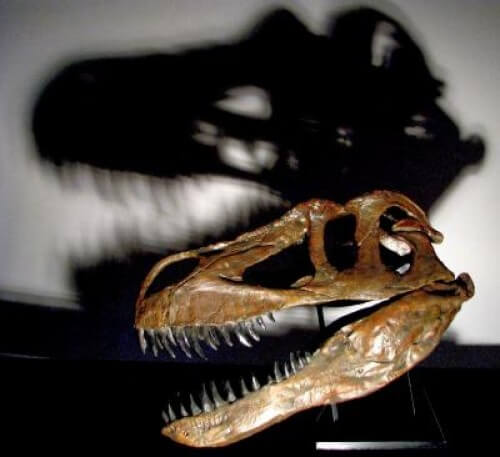to T. gurneyi had sword-shaped teeth up to 10 centimeters long, indicating that they were at the top of the food chain in the Iberian Peninsula about 150 million years ago.

A new species of dinosaur discovered in Portugal may be the largest predator discovered in Europe, as well as the largest predatory dinosaur from the Jurassic period. T. gurneyi had sword-shaped teeth up to 10 centimeters long, indicating that they were at the top of the food chain in the Iberian Peninsula around 150 million years ago. The scientists estimate that the dinosaur could have reached a length of 10 meters and a weight of 4-5 tons. This is according to a study published by researchers from the University of Lisbon - Christoph Hendricks and Octavio Mateos on March 5 in the journal PLOS ONE.
The scientists discovered bones belonging to this dinosaur north of Lisbon. At first they thought it was Torvosaurus tanneri, a species of dinosaur from North America. A more accurate comparison of the tibia bones, the jaw, the teeth and part of the tail vertebra led them to assume that this is a species new to science, and they named it Torvosaurus gurneyi.
T. gurneyi had blade-like teeth. The number of teeth, as well as their size and shape of the mouth may distinguish European and American trobosaurus. The shape and structure of the mouth bones of the two Torbosaurus species were different. The new dinosaur is the second species of Torobosaurus to be named.
"This is not the largest predatory dinosaur we know. Tyrannosaurus, Carcharodontosaurus and Gignotosaurus from the Cretaceous were large animals," says Hendrix. "With a skull of 115 centimeters, T. gurneyi was one of the largest predators of its time, and was an active hunter that hunted other large dinosaurs, as evidenced by its long teeth." Fossil evidence of related dinosaurs leads researchers to hypothesize that this predator was covered in underdeveloped feathers. A dinosaur embryo recently discovered in Portugal is also expected to be considered a new species of Torbosaurus.
